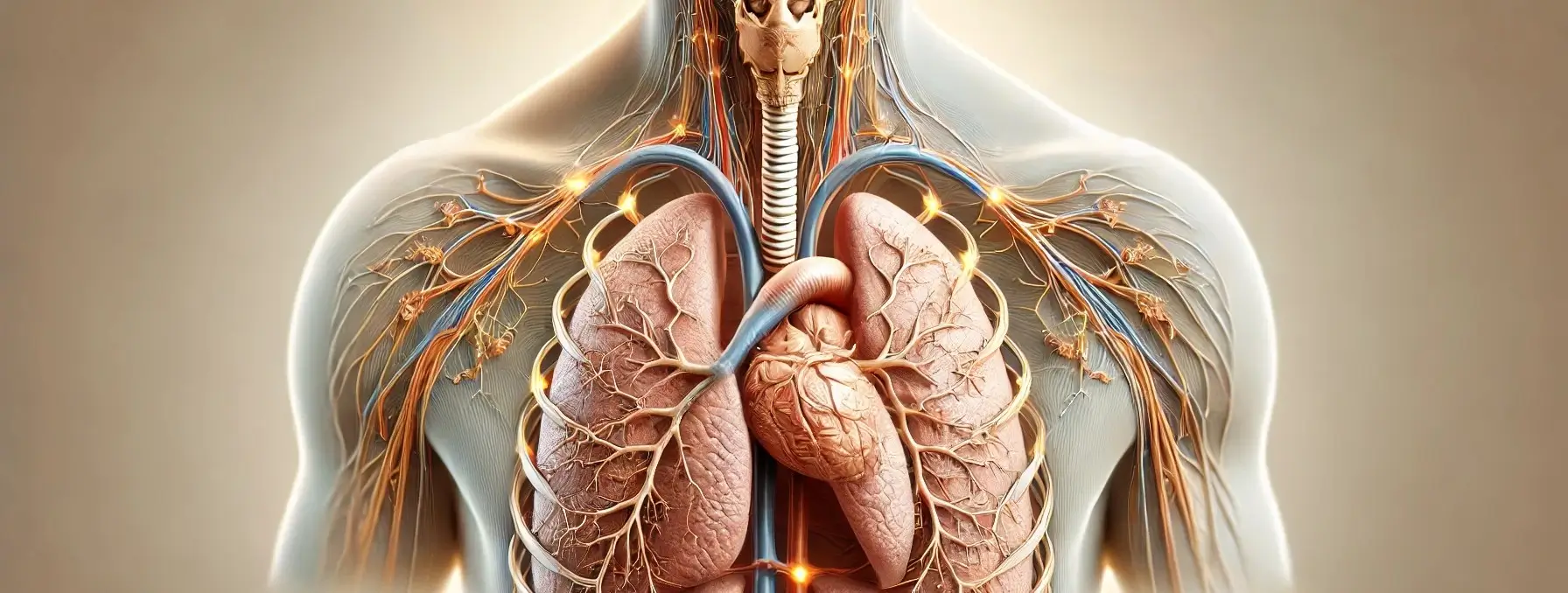- The regulation of respiration ensures that the body maintains balanced levels of oxygen and carbon dioxide.
- This process is controlled by a combination of neural and chemical factors, primarily involving the medulla oblongata and pons in the brainstem.
Main Components Involved in the Regulation of Respiration:
-
Medullary Respiratory Center
- Location: Medulla oblongata
- Function: Controls the basic rhythm of respiration through two groups:
- Dorsal Respiratory Group (DRG): Primarily responsible for inspiration.
- Ventral Respiratory Group (VRG): Involved in both inspiration and expiration, especially during forceful breathing.
-
Apneustic and Pneumotaxic Centers
- Location: Pons
- Function: Modulate the activity of the medullary center to fine-tune the rate and depth of breathing:
- Apneustic Center: Promotes deep, prolonged inhalation.
- Pneumotaxic Center: Inhibits the apneustic center to regulate the breathing rate and prevent over-inflation of the lungs.
-
Chemoreceptors
- Location: Central chemoreceptors in the brainstem and peripheral chemoreceptors in the carotid and aortic bodies.
- Function: Monitor levels of oxygen, carbon dioxide, and hydrogen ions (pH) in the blood and cerebrospinal fluid, adjusting the respiratory rate and depth accordingly.
-
Stretch Receptors
- Location: In the airways and visceral pleura.
- Function: Prevent over-inflation of the lungs by signaling the Hering-Breuer reflex, which inhibits inspiration when the lungs are overstretched.
-
Higher Brain Centers
- Location: Cerebral cortex.
- Function: Allows for voluntary control of respiration, such as during speech, singing, or breath-holding.
Click Here to Watch the Best Pharma Videos

